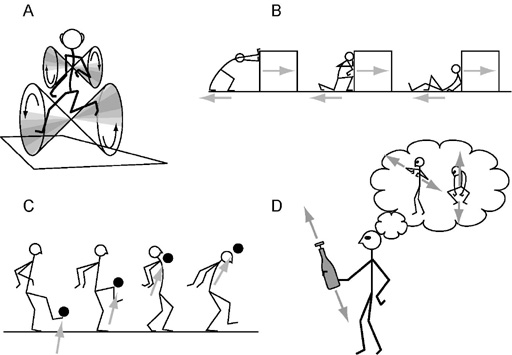
From: The World In Your Head by Steven Lehar

Fig. 10.5 (A) The synchronization between different parts of the body during walking can be modeled as a biphasic rotary cycle of the feet, meshed with a counterrotating sub-cycle of the shoulders and arms that remains coupled to the primary cycle like meshed cogs. (B) The intention to move a box is experienced as a force vector attached to the box, opposed by a traction vector against the ground. (C) The generality of the motor code can be seen in the flexibility with which a soccer player handles the ball, using any body part to apply the desired force. (D) The intention to uncork a wine bottle is perceived as a motor dipole of opposed vectors as an amodal spatial percept that remains locked to the bottle as it rotates and translates through space. The dipole inspires dipolelike thoughts of opposed pairs of muscles, and the motor plan reduces to aligning the dipole perceived on the bottle with a motor dipole of the body.